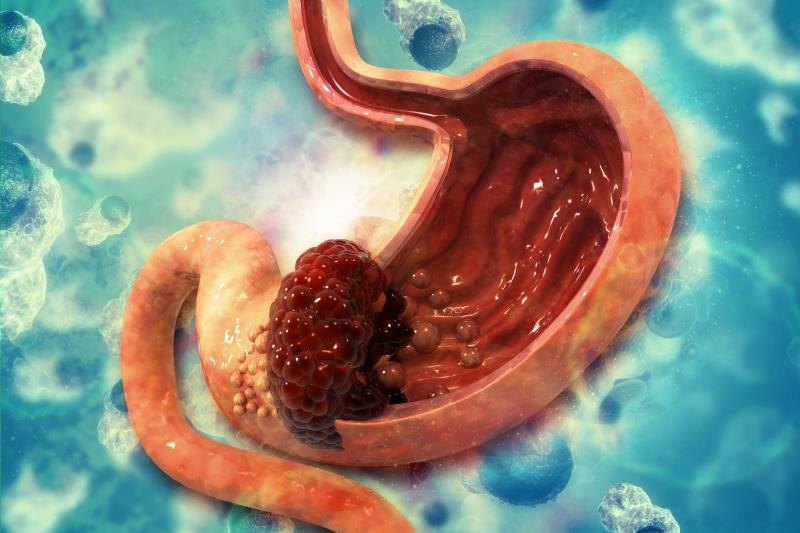
Maintenance therapy with the anti-PD-L1* checkpoint inhibitor avelumab failed to show superior overall survival (OS) compared with continuation chemotherapy (CT) following first-line** (1L) CT in patients with previously untreated, unresectable, and locally advanced/metastatic HER2-negative gastric or gastroesophageal cancer (GC/GEJC), according to the results of the phase III JAVELIN Gastric 100 trial presented at ASCO GI 2020.
“In our previous phase 1b trial, avelumab exhibited potential activity when administered as switch maintenance in patients with GC following [1L CT], including unselected and PD-L1+ population,” said Dr Markus Moehler from the Johannes-Gutenberg University Clinic in Mainz, Germany. “[Our current study] did not meet its primary objective of demonstrating superior OS [including the] the PD-L1+ population.”
Of the 805 patients who did not have progressive disease following a 12-week induction phase, 499 patients (median age 61.5 years, 66 percent male) entered the maintenance phase. Participants were randomized 1:1 to receive either intravenous avelumab 10 mg/kg Q2W switch maintenance or continued 1L CT or best supportive care alone. Minimum follow up was 18 months. [ASCO GI 2020, abstract 278]
Among all randomized patients, median OS post induction were similar in the avelumab and the CT arms (10.4 vs 10.9 months; hazard ratio [HR], 0.91, 95 percent confidence interval [CI], 0.74–1.11; p=0.1779). At 24 months however, the OS rates seemed to favour avelumab over CT (22.1 percent vs 15.5 percent).
Similarly, avelumab yielded no OS benefit in the PD-L1+ subgroup (12.3 percent of evaluable participants) compared with CT (median, 16.2 vs 17.7 months; HR, 1.13, 95 percent CI, 0.57–2.23; p=0.6352).
A silver lining?
Despite the lack of OS benefit in the overall and the PD-L1+ cohorts, an exploratory analysis of the PD-L1+ subset using the 22C3 antibody for CPS*** reflected a potential OS benefit with avelumab vs CT (median, 14.9 vs 11.6 months; HR, 0.72, 95 percent CI, 0.49–1.05). The Kaplan-Meier curves distributed after a year and remained separate even at 2 years, said Moehler.
Avelumab maintenance also showed clinical activity vs CT, as reflected by the numerically higher rates for duration of response at 12 months (62.3 percent vs 28.4 percent). The rates remained higher in the avelumab vs the CT arm at 2 years (51.0 percent vs 13.5 percent).
In terms of treatment-related adverse event rates (AEs), the rates with avelumab were 61.3 percent and 12.8 percent for all grade and grade ≥3 AEs, respectively, which were lower than those in the CT arm (77.3 percent and 32.8 percent, respectively).
“[Our findings suggest that] avelumab maintenance showed clear clinical activity [and favourable safety] in GC/GEJC. Duration of response was longer … In the retrospective exploratory subset analysis, the PD-L1+ population defined by CPS ≥1 showed a trend for longer OS with avelumab,” said Moehler.
“Further studies are needed to identify patients who can derive benefit from checkpoint inhibitor therapy across the continuum of care with [GC/GEJC],” he concluded.